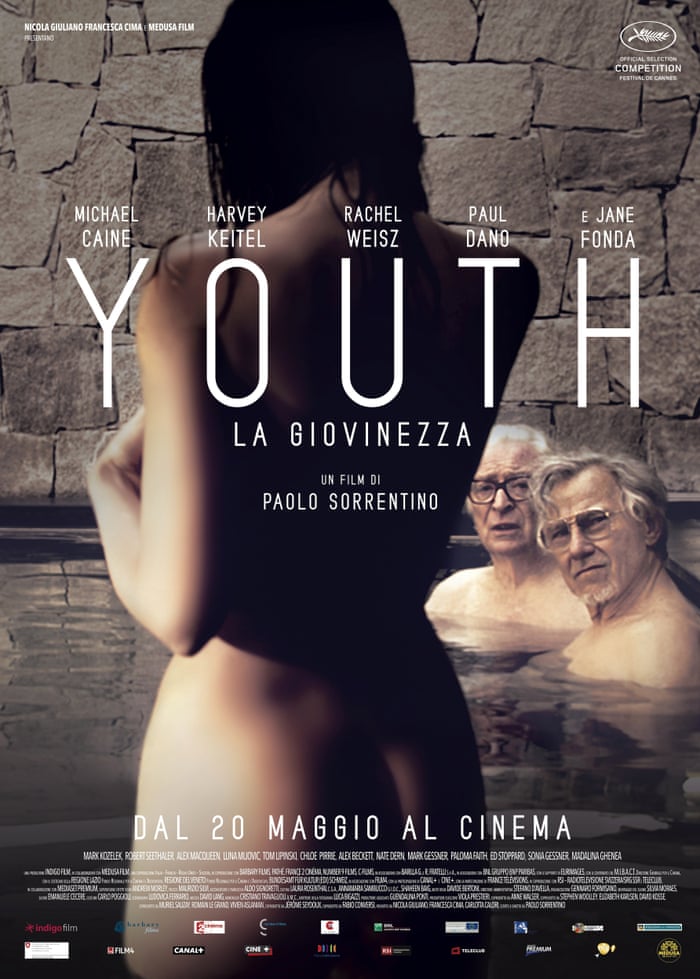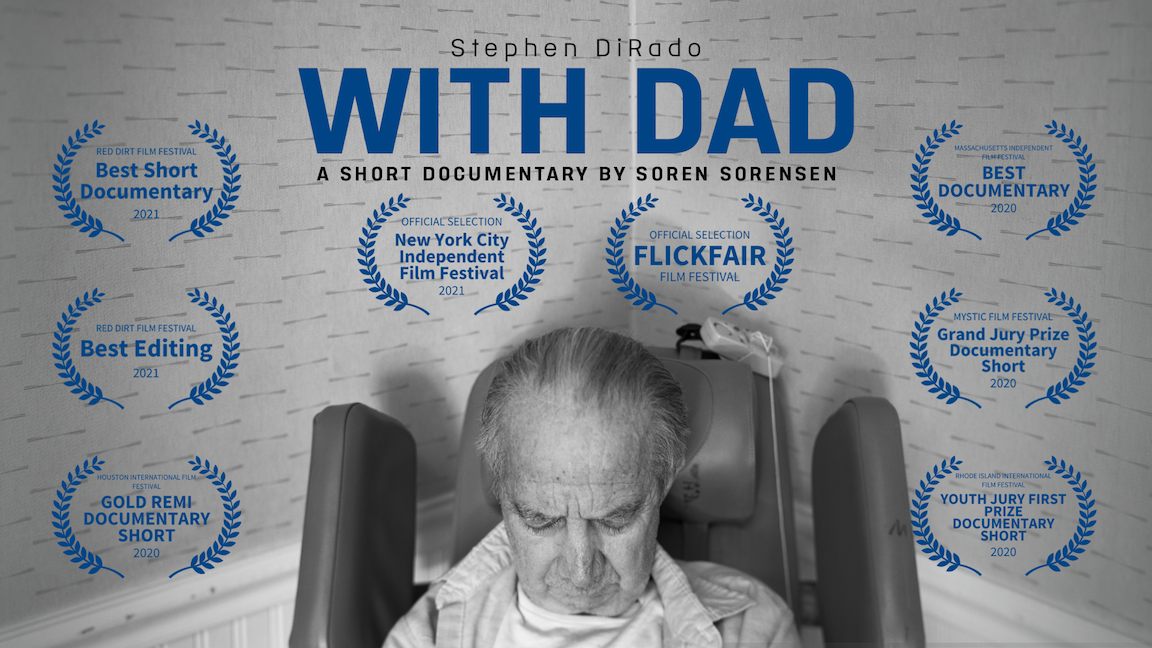Nomadland: Movies, Metaphors, and Modes of Production
WARNING: THIS ARTICLE CONTAINS SPOILERS FOR THE FILM NOMADLAND.
For starters, a film is ALWAYS a metaphor for its mode of production.
I firmly believe that the above (paraphrased) declaration by film theorist and historian David E. James applies to ALL of cinema, indeed all of art, but Chloé Zhao’s Nomadland, her masterful 2020 riff on grief, solitude, and the precarious state of the American worker, is the sort of film that readily applies itself to James’s theory. Nomadland’s examination of people who have rejected conventional living for an itinerant existence dwelling in converted vans and campers was indeed inspired by the nonfiction book Nomadland: Surviving America in the 21st Century by Jessica Bruder. Zhao however has chosen to explore the reality of this subculture through the most illusory of mediums, and her centering of economic and social issues, coupled with a largely non-professional cast playing versions of themselves, makes Nomadland akin to other films that blur the lines between narrative fiction and documentary. Two that particularly spring to mind are Herbert J. Biberman’s Salt of the Earth (1954) and Haskell Wexler’s Medium Cool (1969); both films are easily accessible when viewed through this “David Jamesian lens”.
Such technical decisions on Zhao’s part (the casting, the rejection of glamorized costume and makeup, the focus on working class concerns, etc.) merely forms the surface layer of metaphor, and that is the one that viewers can most readily recognize when considering James’s directive. “Ah!” you might say, “I see what James means! Zhao is basing the film on real people and so she casted these people. She deliberately depicted these characters and situations with gritty realism– thus the realistic quality of the film is a metaphor for the way she made it!” That is all true, but we can take these ideas even further to consider how the film’s thematic world and rhythms mirror Zhao’s mode of production as a storyteller.
He’s real friendly…. (We’ve got to talk about the dog.)
Throughout Nomadland, Zhao rejects Hollywood narrative conventions, much in the same way the film’s nomads reject the conventions of middle class, consumerist culture. To be clear, many of the nomads of the film have found themselves pushed to the margins of life by economic forces and personal traumatic events beyond their control, yet they have formed a community on the open road centered largely around the spirit of going one’s own way and bucking the traditional path. In a similar vein, Chloé Zhao chooses the path of the cinematic nomad, taking the audience off-road from its storytelling comfort zone.
Nomadland centers around the character of temp worker Fern (Frances McDormand), a widow who loses her home in the company town of Empire, Nevada shortly after the local United States Gypsum Corporation suspends operations there in 2011. The film gives us the basic stats about Empire at the outset and much of the town of Empire was indeed shuttered following the 2011 close of the USG plant. USG reinstated some of the plant’s operations in 2016, a place in time after the events depicted in Nomadland, but many long-time residents did leave. For those interested in learning more about the history of Empire, there is an excellent run-down in Jenny Kane’s March 1, 2021 Reno-Gazette article. While grounded in specifics, however, Fern’s journey is a very personal, emotional sojourn that transcends to a great extent time and place. Fern is mired in grief over the loss of her husband and the film accompanies her on her travels through the western United States in her van/home, christened Vanguard, as she works a series of seasonal jobs to get by. At first blush, Nomadland is a typical road picture, but Zhao steadfastly denies us succor in the genre’s familiar creature comforts.
A standout moment that amply demonstrates Zhao’s motivations occurs early on in the film: a poignant encounter Fern has with an abandoned dog. The dog, according to the manager of the RV park Fern occupies while working as an Amazon holiday worker, is left homeless when its owner, another park resident, has a stroke. The manager urges Fern to take the dog with her when she leaves, assuring her, “He’s real friendly.” This exchange momentarily tempts us with the expectation that Fern will take on a canine companion, for the “unexpected sidekick trope” is a common feature of the road film, i.e. a solitary and somewhat guarded protagonist unwillingly takes on a travel companion, often one that is symbolic of a greater innocence and openness like an animal or child, which will then fuel the protagonist’s character arc by helping said protagonist evolve emotionally or psychologically in some manner. Film viewers are very familiar with this plot device and Zhao dangles it before her audience like a carrot, only to snatch it away. Nomadland puts a great deal of emphasis on Fern’s decision to take the dog or not by showing the viewer a very carefully framed scene of Fern and the dog as they consider one another.
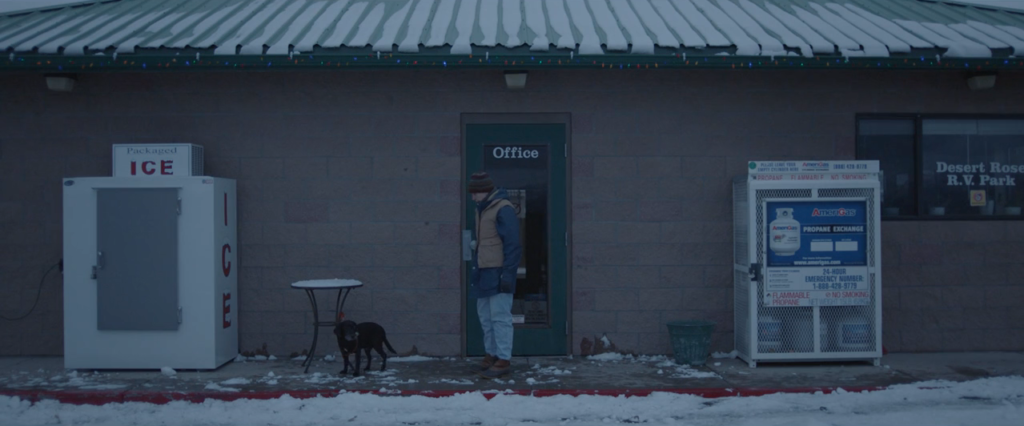
Fern tentatively reaches out to pet the dog and there is a brief moment of connection.
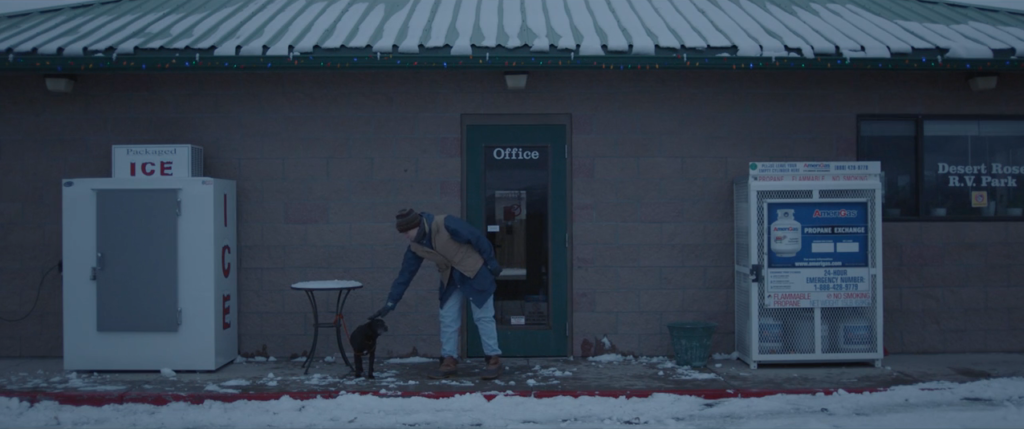
Then counter to audience expectations, she walks away. The camera stays on the dog for a long beat.
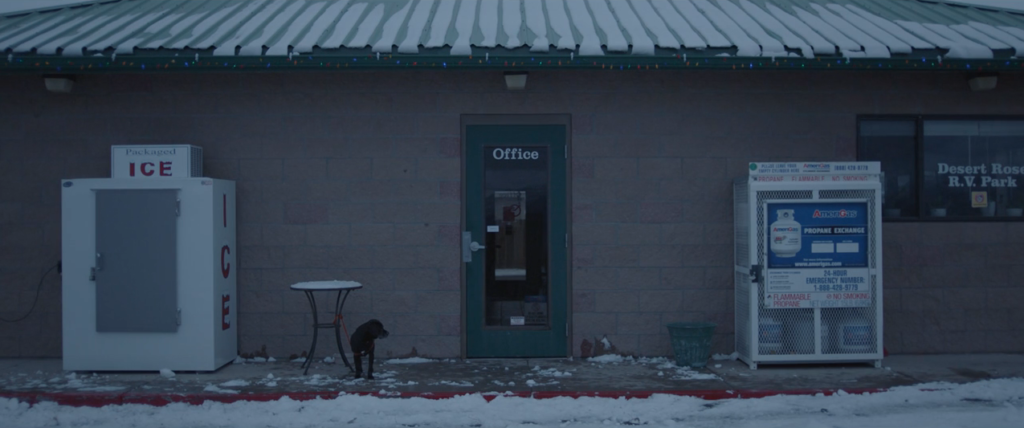
Frankly, one can’t help but think that even the dog seems a little surprised to have been left as it looks on at the departing Fern. The dog is not just a dog here: it represents the cinematic conventions that we are used to when watching narrative fiction films of the classic Hollywood mode. Its abandonment is Zhao’s declaration that Nomadland is aiming to explore a greater truth, and get closer to reality through its fictive tale than mainstream film conventions typically allow. The fact that the dog scene is one of the more carefully staged moments of the whole film merely reinforces Zhao’s message: I will give you the fiction but only so far as it conveys the truth.
Try MCD– truth through performance.
Narrative film is a performance medium, and while it often attempts to arrive at truth through artifice it frequently falls short. That is one of the reasons why Nomadland is so remarkable: with only a few professional actors and a cast largely comprised of people playing versions of themselves, it would be understandable if the believability of the performances suffered from inconsistency, but it does not. Very rarely does a mixed cast (a mixture of professional actors and amateurs) come across as believable. There is often a break in audience suspension of disbelief when it comes to accepting the known professional actors as “one of the gang,” and the performances of the amateur actors can seem glaringly stilted in comparison. The aforementioned Salt of the Earth (1954) is one such example of the latter: its attempt to realistically depict the plight of Mexican-American miners is somewhat hampered by its heavy use of actual miners and millworkers in the supporting cast. The quality of the performances in Salt of the Earth are simply too inconsistent for a smooth and totally immersive viewing experience, but not so with Nomadland.
Zhao’s skills as a director might very well be the deciding factor here, but one cannot rule out the theory that the film’s magic is the result of the supposition of a professional cast committed to authenticity over ego concerns (Frances McDormand and David Strathairn) with a group of amateurs who are fiercely committed to living out an authentic (if unconventional) life. Both sides may have vastly different starting points but when they come together in the desert, they are both wholly committed to telling the true story of the Nomad community.
There may also be a touch of serendipity in Zhao’s casting of the unofficial leader, and some might say sage, of the Nomad community Bob Wells. While not an actor, he is a seasoned media personality of sorts through his popular youtube channel CheapRVliving and is an experienced lecturer and teacher of Nomad life skills. He humbly describes in a recent article the scenes where he reenacts his workshops at the annual gathering RTR (Rubber Tramp Rendezvous) as, “That was just me talking. I was teaching seven or eight, nine classes, every RTR for ten years. So standing up — you wind me up, and I’m a doll. You just wind me up, and I start talking and do my thing.” Mr. Wells’s humility aside, he also opens up with great candor in the penultimate scene between he and Fern when he speaks about the death of his son from suicide, a true event and something Wells rarely discusses, which is at the very least a testament to the emotionally secure atmosphere of Zhao’s set. Indeed, the Nomads of Nomadland share some of the darkest times of their lives throughout the film.
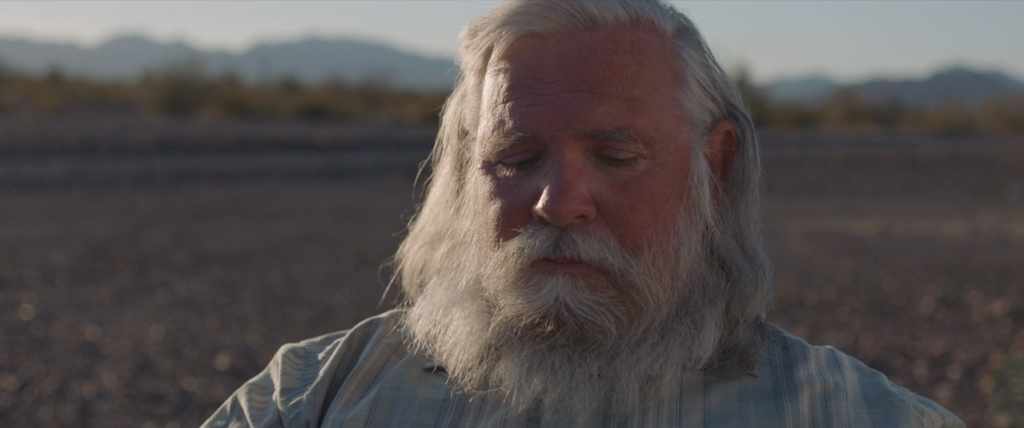
The emotional power of the scene lies in both Wells’s candor and Fern/Frances’s total commitment to sharing the energetic and emotional space with him. Throughout the scene, she is an active participant in receiving his story. Likewise, throughout all of Nomadland who she is as Fern the character and Frances the actress align on a fundamental level and one gets the sense that Frances McDormand has committed to playing a version of herself as well, and not just simply interpreting a character. Indeed, in an early scene of her registering at the RV park we get a glimpse of a Nevada driver’s license with what appears to be the name Frances McDormand on it and when the manager is unable to find her reservation listed, Fern says “Try MCD.” MCD of course is McD for McDormand. Fern and Frances are one the film tells us, and it is McDormand’s total immersion in the creative act that embodies the spirit of Nomadland: plunge forth into a more fully realized experience of who you are, attempting to break free if not completely unfettered, and as Fern opines, be houseless but not homeless.
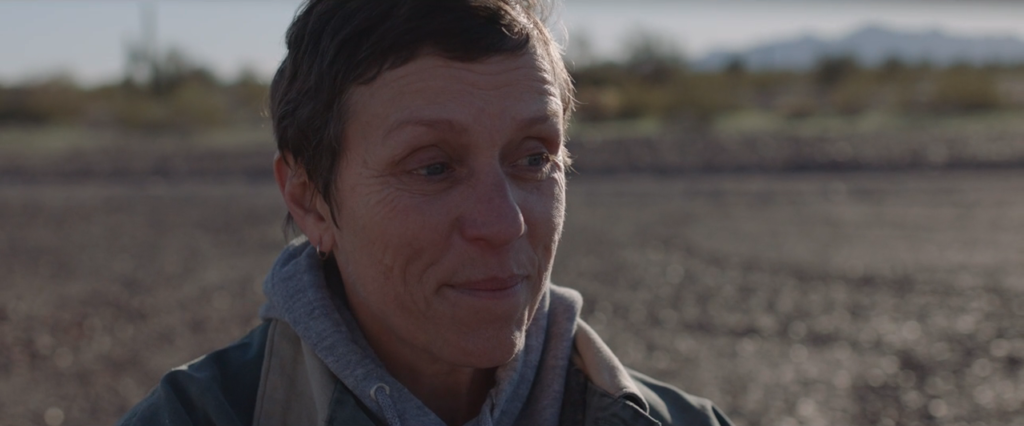
In so many ways McDormand demonstrates her complete lack of vanity and fearlessness as a performer in Nomadland. From her makeup-devoid face to her willingness to depict Fern’s most private moments (having diarrhea in a makeshift van commode is not something Hollywood A-listers are usually willing to portray), McDormand consistently pushes aside any vanities about image to get at the meat of the part. Her most courageous act, however, and the one most emblematic of Zhao’s aims, may be the choice to let Fern become Frances, rather than the other way around.
~Mary Bowen, Reinvent the Lens
As of this writing, Nomadland is available in select theaters and on HULU.


